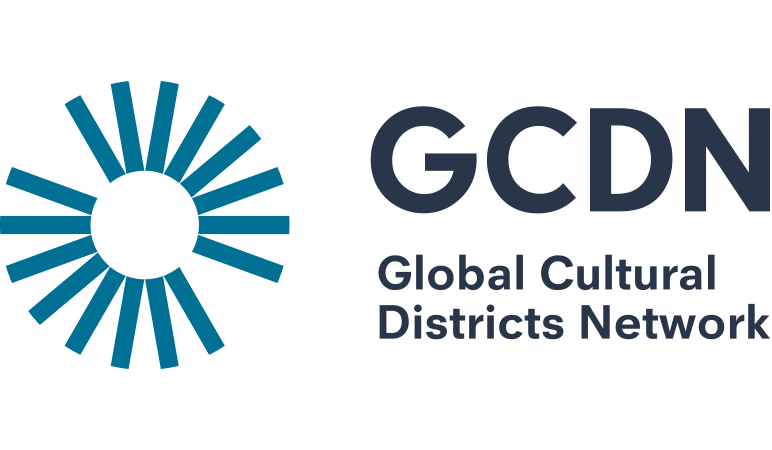Format & agenda:
The Covid-19 global pandemic has irrevocably changed the cultural landscape, particularly in terms of the area of cultural programming. To explore the impact and implications on cultural programming, two informal and intimate roundtables amongst GCDN members and external experts were held on 8 and 10 December 2020. Facilitated by Greg Baeker – Director of Cultural Planning and Development in the Department of Culture and Tourism, Abu Dhabi – these roundtables aimed to openly share ideas and experiences around hybrid cultural programming; that is, the shift away from purely physical/on-site cultural programming towards blended models of the physical and digital.
Summary of key points:
‘What is the optimal mix between the digital and physical for cultural programming to achieve maximum cultural impact and outcomes?’
To kickstart and frame the discussion, Baeker defined hybrid cultural programmes as currently comprising three forms:
-
-
- Delivering cultural experiences as live programming (usually broadcasted from cultural facilities) that is to be accessed as digital content
- Dividing cultural experiences into live programmes (either on-site at cultural facilities or in community settings) with separate but complementary digital content
- Delivering digital cultural experiences on-site but enhanced through digital technologies such as virtual and augmented reality (VR/AR)
-
Although hybrid cultural programming is not a new idea, Covid-19 has accelerated and expanded its volume and significance. However, there is still a lack of shared best practices and optimal development models.
The discussion in the two roundtables surfaced the following lessons and questions:
– The shift towards hybrid models is changing cultural programming in three ways:
-
-
- As digital programming has enabled the sharing of content before an exhibition opening, there has been a rethinking of the project timeline. In particular there has been a greater tolerance and shift towards process-based projects and informal processes, rather than the focus on presenting a finished product.
- Covid-19 has resulted in a heightened sense of mutual aid and support. There has been a growth of support groups and sharing of resources amongst cultural leaders and managers, as well as collaborative projects
- The (re)emergence of the hyper-local and “policies of proximity”, where there has been an increasing focus on engaging community and the impact of arts and culture on enabling placemaking and the social life of neighborhoods.
-
– The growth of the digital does not mean that the value of live arts experiences should be compromised or dismissed. In particular, there is anecdotal evidence of arts audiences preferring to return to cultural facilities for live programming, despite the supply of digital cultural content.
– Although Covid-19 has increased the tolerance and appetite for digital cultural experiences, there is an urgency to consider how to further deepen the engagement and personalisation of digital cultural experiences.
– Hybrid cultural programming has the ability to democratise the art world and grow arts audiences, especially in terms of broadening access and enabling inclusivity. Along with the (re)emergence of the hyper-local is the potential to reach new audiences, especially in terms of growing regional and global audiences for digital cultural content, and lowering the threshold fear and barriers of entry for new arts audiences
– The shift towards hybrid cultural programming highlights the need for more research and to redefine the field, especially in terms of enhancing better understanding of the online arts audience. Questions to consider include:
-
-
- How do you deliver public art programming when there is no live public?
- Are we able to consider online arts audiences as a “public”? How do we account for online arts audiences and what are the differences between online and physical arts audiences?
- Is there an overlap between physical and online arts audiences?
- What are the metrics of success to be used when evaluating the engagement of digital cultural programming?
- How does one best continue to sustain and deepen the engagement with online arts audiences post-programme?
-
– It is beneficial for cultural institutions, districts and leaders to find new ways of adopting digital technological trends such as mobile media, augmented reality and virtual reality to offer meaningful and interactive cultural experiences
– There is a need to incorporate digital technologies across the entire value and supply chain, especially in terms of enhancing visitor touchpoints from marketing to points of sale.
– Despite the expansion of hybrid cultural programming, there should be a conscious awareness of the need for new capabilities, facilities and knowledges, including the need and operation of new technical equipment, and understanding of rights and intellectual property.
– There is an urgency to find and share financially sustainable models of hybrid cultural programming, and to consider the bottom line.
GCDN
December 21, 2020
